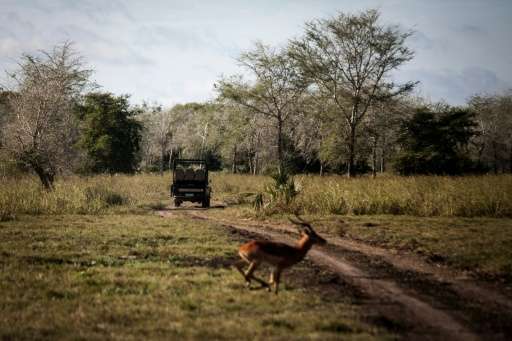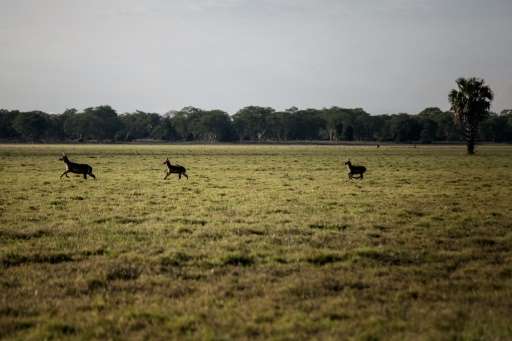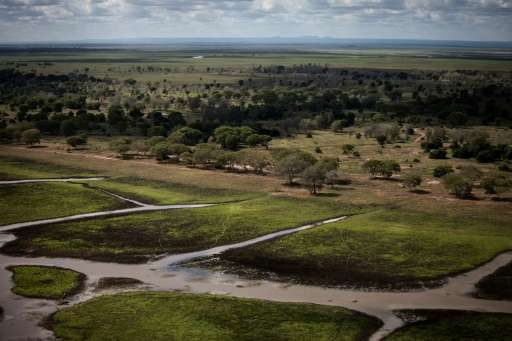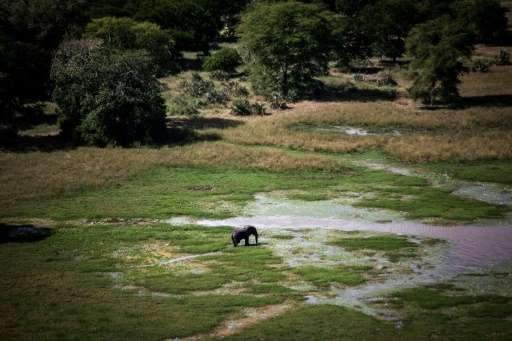Conflict and drought threaten Mozambique's Gorongosa park

Passing through the aged faded gates into Gorongosa National Park, it's difficult to imagine you've just entered Mozambique's largest wildlife sanctuary.
Bled dry by a long civil war that ravaged Mozambique from 1976 to 1992, the park has seen a remarkable turnaround in the last decade.
But even as it rises from the ashes, a fresh bout of conflict and a devastating drought threaten to undermine its revival.
Big mammals like elephants and buffalos are still rare in this 4,000 square kilometre (1,544 square-mile) reserve, but a restoration project launched by American philanthropist Greg Carr in 2004 has seen the return of species once on the brink of extinction.
"Before the launch of this project, we were heading towards extinction," Gorongosa conservation head Pedro Muagara told AFP.
"Now, in terms of reproduction, there are very positive signs. The numbers are growing."
Today, the park has more than 72,000 animals from 20 different species, mainly antelopes and zebras.
But even as wild life returned to Gorongosa, political tensions were growing.
Since 2013, sporadic fighting has broken out between government forces and rebels from the main opposition Renamo party.

Refusing to accept the results of the 2014 national vote, Renamo leader Afonso Dhlakama has holed himself up in the mountains bordering the park.
For villagers fleeing the unrest, the unfenced Gorongosa has proved an easy refuge and food source.
Decked out in his khaki ranger's uniform, Muagara is one of the 150 armed rangers protecting animals from poachers and illegal hunters.
"With the fighting, the park has become a real target because the communities can no longer sustain themselves, so they hunt the animals instead," he said.
Tourists scared
An ongoing regional drought sparked by the El Nino weather phenomenon that has ravaged southern Africa for two years has also presented a new challenge, drying up several rivers in the park.
Animals desperate for water now congregate around the few remaining water sources, making them easy targets for poachers.

Faced with the unrelenting scourge of poaching, the park dedicates much of its rehabilitation programmes to educating local communities.
"We're trying to offer them alternatives, like farming options, for example," Gorongosa director of human development Manuel Mutimucuio told AFP.
At the end of the long track cutting through the thick forest is a glistening blue swimming pool at a luxury hotel completely renovated in 2012.
But today the facility stands empty, deserted by tourists frightened by the conflict. Only a few researchers remain in the luxurious rondavels.
In 2012, Gorongosa received 7,000 registered visitors. Today, even with the fighting confined to the park's extreme north, that number has plummeted to less than 1,000 – mostly expatriates living in the capital Maputo, and South African tourists better informed of the situation on the ground.
"Unfortunately, today we have just four tourists – everybody else here works either directly or indirectly for the park," said hotel manager Paolo Matos, who took up the position just weeks before tensions escalated in 2013.
"We're losing a lot of money."

With Gorongosa's turnaround once again threatened, park employees want to believe in the promise of better days, drawing hope from ongoing peace talks between Renamo and the government.
"During the civil war, everything was destroyed and we rebuilt," sighed Menesses Sousa, a park employee since 1974, before the war.
"But today it's starting again, and I don't what will happen."
© 2016 AFP



















